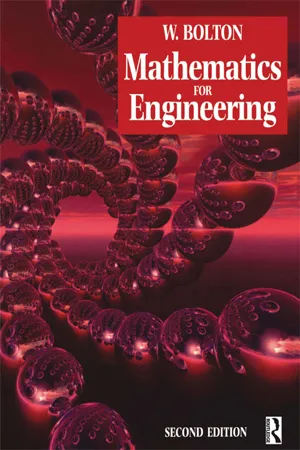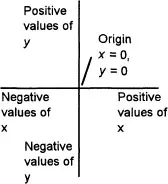
Mathematics for Engineering
W Bolton
- 352 pages
- English
- ePUB (mobile friendly)
- Available on iOS & Android
Mathematics for Engineering
W Bolton
About This Book
Mathematics for Engineering has been carefully designed to provide a maths course for a wide ability range, and does not go beyond the requirements of Advanced GNVQ. It is an ideal text for any pre-degree engineering course where students require revision of the basics and plenty of practice work. Bill Bolton introduces the key concepts through examples set firmly in engineering contexts, which students will find relevant and motivating. The second edition has been carefully matched to the Curriculum 2000 Advanced GNVQ units:
Applied Mathematics in Engineering (compulsory unit 5)
Further Mathematics for Engineering (Edexcel option unit 13)
Further Applied Mathematics for Engineering (AQA / City & Guilds option unit 25)A new introductory section on number and mensuration has been added, as well as a new section on series and some further material on applications of differentiation and definite integration.Bill Bolton is a leading author of college texts in engineering and other technical subjects. As well as being a lecturer for many years, he has also been Head of Research, Development and Monitoring at BTEC and acted as a consultant for the Further Education Unit.
Frequently asked questions
Information
Section E
Graphs
- Plot graphs, choosing suitable scales and clearly marking data points.
- Plot graphs of equations: in particular, linear, exponential and sinusoidal.
- Determine gradients, intercepts and areas from graphs.
- Intepret graphs.
- Recognise the relationship between polar and Cartesian representations of points on a graph; plot polar graphs.
- Reduce non-linear laws to linear form.
- Use and interpret graphs in an engineering context.
13 Graphs
13.1 Introduction
13.2 Cartesian graphs


Table of contents
- Front Cover
- Half Title
- Title Page
- Copyright
- Contents
- preface
- Section A: Number and mensuration
- Section B: Algebra
- Section C: Further algebra
- Section D: Trigonometry
- Section E: Graphs
- Section F: Calculus
- Answers
- Index